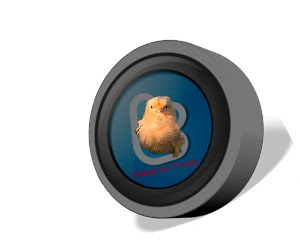Scott Simpson
Scott Simpson
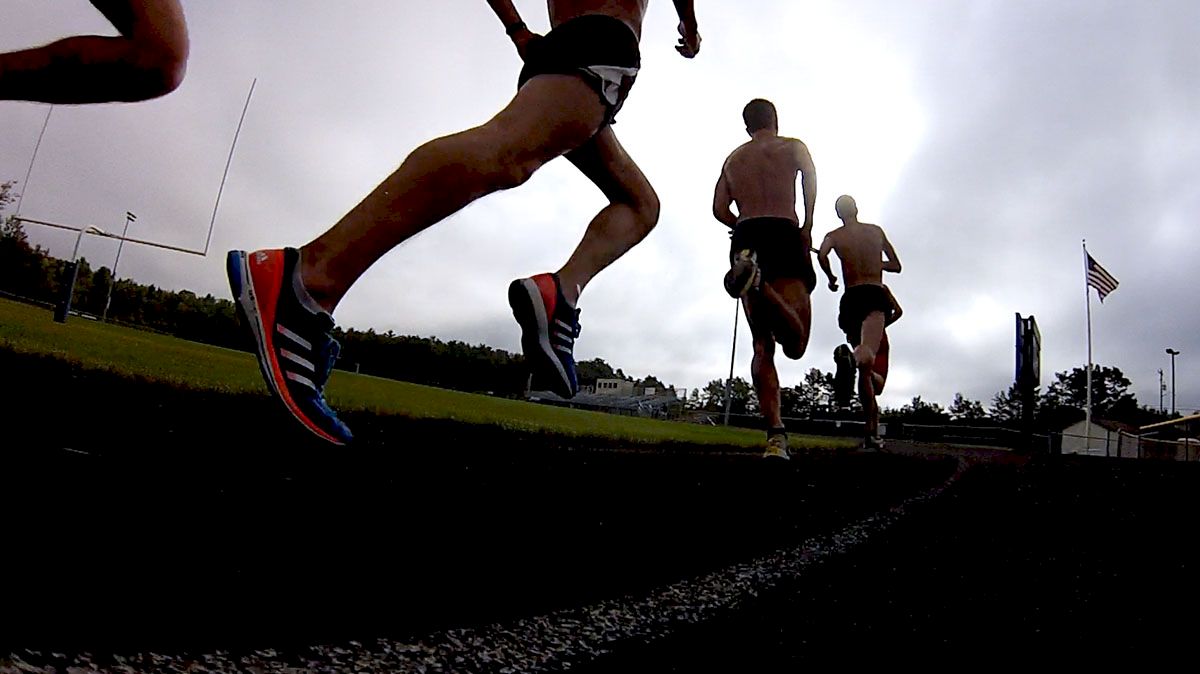
© Copyright – 2009 – Christopher Kelsall
As the saying goes, nice guys finish last. Twenty-nine year old Scott Simpson is an athlete and physiotherapist, plying both trades in Victoria, British Columbia. Originally from Sackville, New Brunswick, Simpson is one of the nice guys in our sport, but sometimes he finishes first.
He is, at least on the outside, the epitome of sedate when flicking his ankles striding-out during his warm-up, in and out of the race corral. Thrice this year, I found myself warming-up, passing Scott back and forth.
Moments before the gun sounds, I like to go up to the fellow runners and ask questions to see if there is a hint of self-deprecation emoting as a control mechanism against scrambling emotions swirling inside. For some, those moments cause staccato and incomprehensible bursts of weak humour, for others they want to talk about last night’s beer flavours, sampled at the local Irish pub.
Scott calmy talks about whatever you want to talk about, as if you are standing in his clinic, I was going to ask him if my left Achilles is about to go, moments before the gun sounded, but my watch was ‘off,’ and the gun sounded sooner than expected; Scott disappeared into the lead.
I should have shouted out my question. I am sure, after the turn-around, when heading back, he would yell out the answer as we pass, pro-bono - one of the nice guys in sport. I think the only time you can’t get a diagnosis from him is in the final 250 metres leading to the finish chute. This is where he morphs, for just a moment he becomes a ruthless killer on the road, hunting down his prey and is ripe for shredding his foes’ carcass. Case-in-point the photo of him, racing a road 5k and having to hand Olympic Gold and Silver medalist, Simon Whitfield a prescription for a kick. Take that! And call me in the morning. Actually they tied-a dead heat after an all-out sprint to the finish. They gave it up for a handshake. Many road running specialists have been handed their heads by triathlete, Whitfield. Tying here is victory and with it a new course record of 14:37.
Some things are better left unsaid.
“Scott, feel free to monologue, during the interview.”
“Chris, come over for a beer, my hands are getting tired from typing.”
THE INTERVIEW
CK: 2006 Canadian 10, 000m championships in Abbotsford, BC you of course won the race and set a personal best - what happened on the day and leading up to that race?
SS: The race in Abbotsford was a good one. I had a decent build up to it and had run a 30:07 in the Sun Run that year. So my primary goal was to go sub - 30. Secondly, I wanted to win the National Championship. It was a good field with Steve Osaduik running great at the time, Jerry Ziak (he ran 13:56 for 5k that year), Mark Bomba and David Jackson were also in good form. I knew that to win I would have to kick off a fast pace. It ended up being very close with 29:51.04 for me, 29:51.66 for Bomba and 29:51.74 for Ziak. Quite amazing after twenty-five laps around the track and that the whole pack was together with a mile to go.
CK: What did that decent build up look like?
SS: Well, I think the key to running fast times is to build a solid base first and foremost. There were a few stressful things going on in my life, my mom had cancer, my grandfather passed away, I was working in an unsupportive work environment. So I ran more miles in my spare time to burn off the steam. As the 10000m approached I put in more quality work while cutting the mileage and working the other systems.
CK: In comparison you ran 1:20 slower in 2009, how were the conditions this year and your fitness in comparison.
SS: This year I was faced with a few challenges. The day after the race I was heading over to Serbia to be the Physio for Team Canada, so that was on my mind, and I spent a fair bit of time getting everything organized for this. Also it was very hot and humid in Toronto for the race and it is hard to prepare for this in Victoria. It was a good field and my goal in the race was to run 29:10 - this was reasonable because I had run 14:21 for 5k on the track and 14:27 on the roads in Vancouver. At the 5k point I was at 14:40ish (faster than the race in Abbotsford). After this point, maybe around 6k, I realized it wasn’t on. This is a terrible spot to be in when you are 6k into a 10k on the track! I hate not finishing races, so I sucked it up and cruised it in. These are the risks we take in the longer races of course and I would much prefer to burn out trying to run a fast time than not go for it.
CK: Sounds rather Neil Young-esque. How was your time in Serbia? Besides doing physio work on athletes, like you do every day, did you get a chance to check out the surroundings and play tourist?
SS: Serbia was a wonderful experience. To be honest, I did not expect to be representing Canada as a Physiotherapist this early in my career. It is an honour to help athletes reach towards their potential. I understand the many challenges that the athletes face having been there myself. I fully respect their efforts and will do whatever I can to help them achieve their goals. It was a great group of young athletes who are good people as well as athletes-and was the most successful Games in terms of medals since the 1980s for our Track and Field group.
CK: What are the some of the differences when dealing with athletes of varying disciplines?
SS: Every athlete is unique in their preparation and some require more attention than others. One of the aspects that I found quite interesting was if you we're to add up total race time and warm-up time for all athletes it was about the same. In other words sprinters had very long warm-ups and distance athletes had shorter warm-ups. Sprinters tend to have a more outgoing nature, whereas distance athletes are more intrinsically motivated. There is an element of psychology when working with all groups and it is truly enjoyable to help an athlete dial in to what drives them. Often times, injury and psychology are intricately related, and of course it is the Physio who puts the pieces together. Actually, I did my thesis on a similar topic.
Regarding seeing Serbia, I really did not have a chance to see very much. A typical day would involve getting up early and treating athletes in the Village. Then I would go to the warm-up track (either to cover workouts or prep the athletes for the races). Then off to the main stadium to make sure the athletes were ok during competition. Then I would treat athletes back at the village before going to bed.
As you can see this didn't leave a lot of time to check out the surroundings. Considering there was civil war in Serbia very recently and there has been lots of political upheaval (the July issue of National Geographic has an article on this), the contrasts are often very pronounced. For example, on one side of the street there is a huge communist era residential complex and on the other a pristine shopping centre that wouldn't be out of place anywhere in the World. The Serbians that I met were very considerate and helpful. Someday I would like to go back to that part of the world and explore in greater detail; certainly it is a wonderful country that is evolving quickly.
CK: Recently when we were talking at your clinic we discussed minimalism to some degree. In your professional experience, what have you seen from patients who are minimalists that differs in terms of injuries compared to those who wear the bigger cushioning shoes?
SS: As a Physio, I often see problems related to poor use of stabilizer muscles in the body, which is dependent on many variables. By testing these muscles I can essentially predict what injuries will arise given repetitive strain. With my own training I tend to run a lot on soft surfaces - so the surface can absorb the stress. For years, I have preferred wearing shoes that have minimal support, because it makes my ‘stability muscles’ work harder. Personally, I have not had a repetitive strain injury for years.
CK: When is cushioning a good idea?
SS: Considering that most runners have used supportive shoes for a long time, the progression to a more minimalist shoe should be gradual. The body always takes longer to adapt to things than we tend to think in general. The more we can reduce the impact stress of running, the better. Consider how cyclists or swimmers can train for hours on end. We simply cannot do that as runners due to the impact stress on the body. That being said, the human body is an incredible piece of engineering. The foot is made to dissipate stresses very well and when we put too many controlling features in shoes we alter its ability. That’s why I will always prefer running in minimalist shoes on soft surfaces, for example the cushioning is coming from the ground and not the shoe.
CK: There appears to be a small groundswell of concern developing about injuries being caused by overly cushioned footwear. What are your thoughts on the artificial or unnatural effect (rebound) of cushioned shoes?
SS: I don't think the problem in necessarily cushioning. More so it is related to control features that are present in many shoes today. Things like heel cookies and roll bars for example. The foot should be able to move to take full advantage of its natural form. I do believe there is a place for support in shoes, but I think this must be customized to the individual and that our two feet are not always the same (but we always buy shoes in pairs).
CK: Let’s talk a little about training. Are you self coached? Are you more of a peaker, or do you try to stay race-fit as long as possible throughout the year?
SS: Yes at the present time I am self-coached, and I have been for the majority of my running career. Certainly I am very grateful for support I have received in the past. However, I find integrating the principles of training very interesting. In fact, I tend to train by myself almost 100% of the time because it is my me time. Everybody is unique and the training plans needs to be addressed considering this. It is the same idea when I am treating people at the clinic: different people respond to different treatments and I find it ridiculous when professionals treat everybody exactly the same way. I enjoy experiencing the stresses involved with training and trying to figure out the best, most efficient ways to manage them.
As for the peaking: At this stage of my running career I am more interested in running for the health of it and I am somewhat limited by the constraints of my work. However, I love to feel fit and truly enjoy training everyday - and I owe it to my patients to practice what I preach. As a result of this I can get into shape relatively quickly. But I would say that overall I just tend to stay fit all the time.
CK: Have you given any thought to the marathon?
SS: Yes, I have thought about the Marathon and many people have suggested I move up to this distance. But I am in no rush. To run a marathon at a similar performance level to my 10k would require more training. After winning the National 10000m, I was invited to run the National Half Champs. It was about a month afterwards and I did no specific training, but was able to finish about 20 seconds behind the best in Canada. I think with proper training I could go sub 2:20 for the Marathon, and possibly faster. You know the Canadian marathon record was set in 1975 by Jerome Drayton, that’s 35 years ago! I hope that someone in our generation can break this. Certainly there are some good groups working towards this and there are several talented distance runners in Canada right now.
CK: So 5 and 10k are your bread and butter events that for now you are going to stick with?
SS: I do enjoy running 5-10ks. It is a distance where you can outsmart someone by knowing your body and using the appropriate tactics considering your strengths and those of your opponents. I don't like running uni-pace races - I like throwing in surges and tactical awareness. An example of this was a race I had with Simon Whitfield at a 5k here in Victoria, it was a great tactical race. In all honesty the race was relatively meaningless, but we put on a good show for the spectators. Simon and I are both competitive by nature and I was thrilled by the duel, certainly it was nice to win in a kick finish. It was almost like the rush you feel when you step off a roller coaster! Typically as the distances get longer, its about who can hang on the longest, a sort of attrition process. I like races where the top athletes are separated only by seconds, because physiologically the athletes are very similar, but something intangible can make the difference between winning and say 5th place.
CK: You mentioned that you are more interested in “running for the health of it, “ did you find in Serbia that you were replacing the joys of competition by working with athletes, you know…when taking the time to consider who you are dealing with, as a physiotherapist?
SS: Yes. I think the fact that I have competed as an Athlete for Canada helps me to live the highs and lows of working with the athletes. There is no question that I still have tons of passion for running, but my work schedule limits my training time. I enjoy competing for sure, but at this stage of the game I am not going to be an international superstar as an athlete. Nowadays being a top athlete requires a full-time commitment. I grew up with people like Roger Bannister as my role models – Roger was a medical doctor as well as being the first to break the 4 min mile.
Being able to work with the National team unquestionably provides a great outlet for my energy. That being said I get tons of satisfaction working with local athletes and helping people embrace our sport.
CK: People now capable of taking Jerome Drayton’s 2:10 who come to my mind are Reid Coolsaet, Simon Bairu. Of course Jon Brown has done this representing the UK, twice. How about those three and Dylan Wykes and Ryan McKenzie? Do you see the Canadian record falling soon?
SS: I have had the good fortune to interact with all of the athletes you mention. I have a ton of respect for all of them, because they have achieved what they have with hard work. I know that Jon's PB is faster than the Canadian record, but I am not sure what his goals are. Simon and Dylan are a few years younger than Ryan and Reid. They are all very talented and work very hard, I think that this combination is what is required to run great times in the Marathon. I hope that somebody does break it and competition between these athletes as well as others can only help the future of running here.
Photos by the incomparable, Tony Awesome.
Scroll down for comments section
Contact Chris: chriskelsall@flocasts.org
Related Content
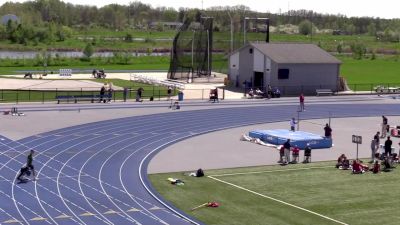 Replay: GLIAC Outdoor Track Championship | May 1 @ 1 PM
Replay: GLIAC Outdoor Track Championship | May 1 @ 1 PMMay 1, 2024
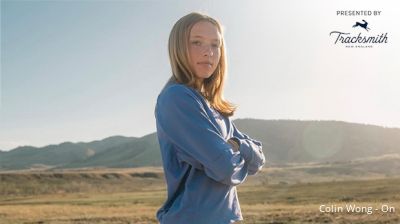 PR Of The Week presented by TrackSmith: Addison Ritzenhein
PR Of The Week presented by TrackSmith: Addison RitzenheinMay 1, 2024
 UIL Track And Field State Championships 2024: What To Know
UIL Track And Field State Championships 2024: What To KnowMay 1, 2024
 Replay: AAA Outdoor Champs | 4A | Apr 30 @ 11 AM
Replay: AAA Outdoor Champs | 4A | Apr 30 @ 11 AMMay 1, 2024
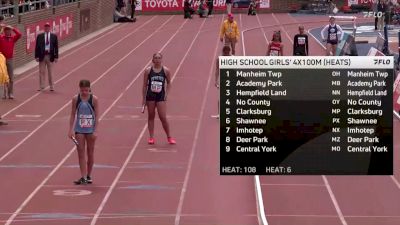 High School Girls' 4x100m Relay Event 108, Prelims 6
High School Girls' 4x100m Relay Event 108, Prelims 6May 1, 2024
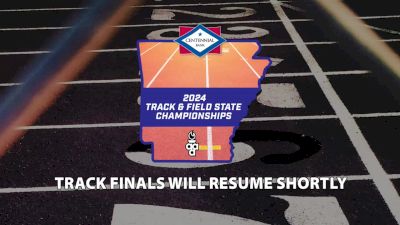 Replay: AAA Outdoor Champs | 3A | Apr 30 @ 11 AM
Replay: AAA Outdoor Champs | 3A | Apr 30 @ 11 AMMay 1, 2024
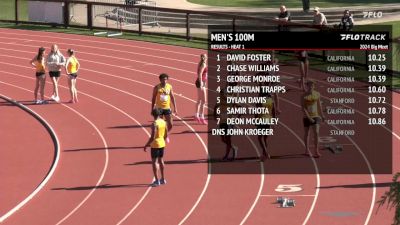 Replay: Big Meet | Apr 30 @ 3 PM
Replay: Big Meet | Apr 30 @ 3 PMMay 1, 2024
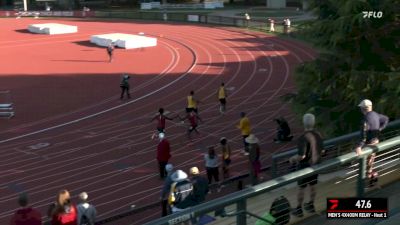 Men's 4x400m Relay
Men's 4x400m RelayMay 1, 2024
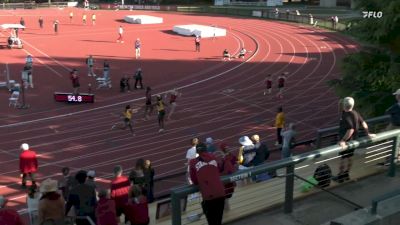 Women's 4x400m Relay
Women's 4x400m RelayMay 1, 2024



